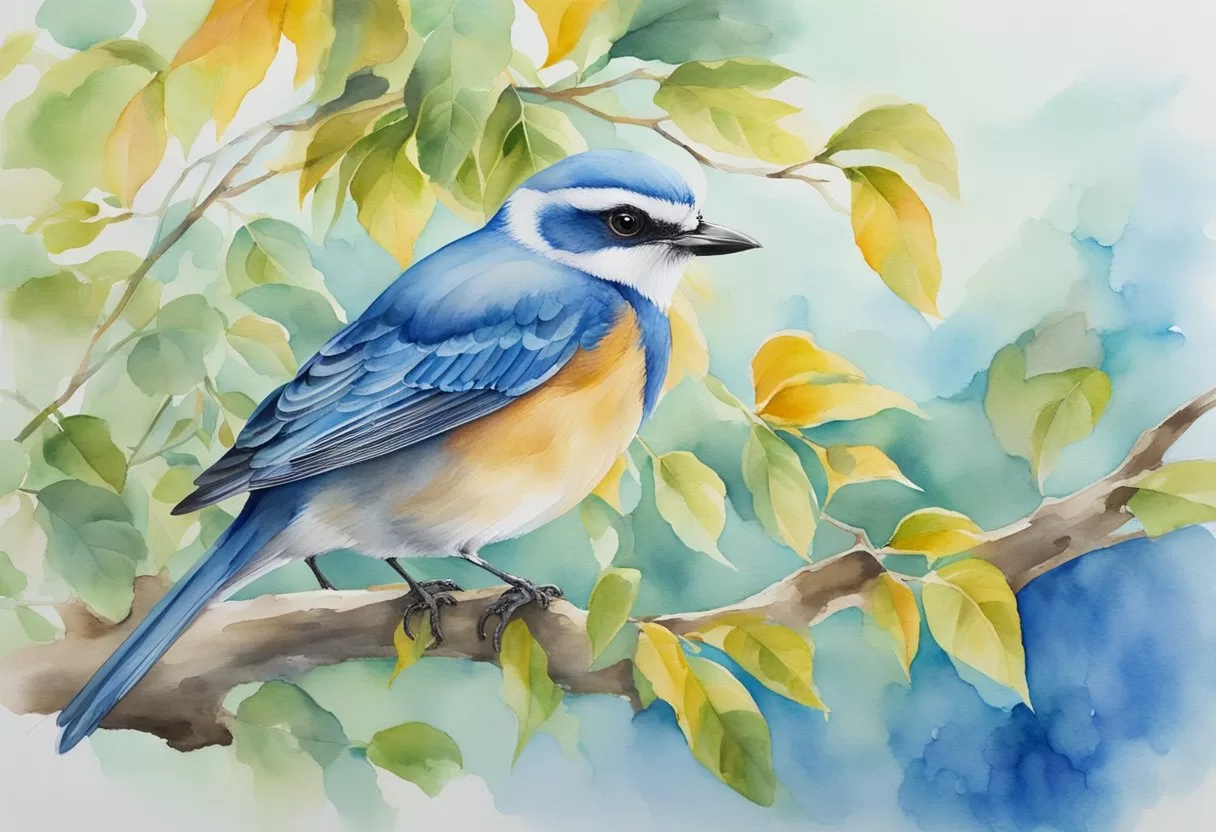Anatomy of Bird Vision
Bird vision encompasses several specialized anatomical features that enhance their ability to perceive colors and light conditions beyond human capability. Key adaptations include tetrachromatic vision and the presence of unique photoreceptors, allowing birds to have superior visual acuity and sensitivity.
Beyond Human Perception: Ultraviolet and Tetrachromatic Vision
Birds possess tetrachromatic vision, which means they have four types of cone cells sensitive to different wavelengths of light. This unique arrangement allows them to see a broader spectrum, including ultraviolet (UV) light.
Many bird species utilize this UV vision for various activities such as foraging, mate selection, and navigation. For instance, flowers and ripe fruits often reflect UV light, making them more visible to birds. The ability to perceive these wavelengths enhances their chances of finding food and locating potential partners.
Photoreceptor Function and the Role of Cone Cells
The photoreceptors in a bird’s eye, particularly cone cells, play a crucial role in their vision. These cone cells are highly concentrated in the fovea, a part of the retina that provides sharp central vision. The density of these cells contributes significantly to a bird’s visual acuity.
In addition to cone cells, some birds have structures like the pecten, which may help to nourish the retina and enhance visual performance. Other adaptations include the tapetum lucidum, which reflects light through the retina, improving vision in low-light conditions. The nictitating membrane acts as a protective layer while maintaining visibility, further supporting their visual capabilities.
Functional Aspects of Avian Color Perception

Birds possess remarkable color vision that significantly enhances their survival strategies. Their ability to perceive a broader spectrum of colors, including UV light, plays a crucial role in hunting, communication, and predator avoidance. The intricacies of avian color perception allow them to thrive in various environments.
Hunting and Foraging Efficiency Boosted by Advanced Vision
Avian species have adapted to utilize their extraordinary color vision for hunting and foraging. Birds can detect subtle color variations that indicate ripe fruits, individual prey, or even potential threats from predators. Their ability to see beyond the human-visible spectrum enables them to identify UV reflectance in fruits and flowers, guiding them to food sources that other animals may overlook.
For example, many insects reflect UV light, allowing birds to spot them more easily. This visual advantage not only increases foraging efficiency but also significantly impacts energy conservation, enabling birds to locate food swiftly.
Communication and Mating: Deciphering Visual Signals
Color perception in birds is essential for social interactions and mating behaviors. Bright plumage colors serve as visual signals for mate selection, conveying information about genetic health and fitness. Males often display vivid colors to attract females, who prefer mates with more vibrant plumage.
Additionally, color variations in plumage can indicate social status among birds. Different species have developed specific color patterns that facilitate communication during courtship rituals, helping establish dominance and territory. Thus, advanced color vision plays a vital role in ensuring reproductive success.
Predator Avoidance and Camouflage Detection
Birds’ ability to perceive colors also aids in predator avoidance. By detecting subtle changes in color and patterns, they can identify potential threats, such as camouflaged predators or other dangers in their environment. Their binocular vision enhances depth perception, which is crucial when navigating through complex habitats like forests.
Moreover, some birds have evolved plumage that reflects specific wavelengths, allowing them to remain inconspicuous to both prey and predators. This strategic use of color helps them blend into their surroundings, thus enhancing their chances of survival. The interplay between color perception and camouflage detection underscores the importance of visual acuity in avian species.
Behavioral and Ecological Interactions Influenced by Vision
Bird vision significantly impacts their behavior and ecological interactions. Understanding how these creatures utilize visual cues is crucial to grasping their daily activities, from migration to foraging.
Navigating the Skies: How Birds Use Visual Cues for Migration
Birds display remarkable navigational skills during migration, often relying on visual cues to guide their paths. Species such as the blue jay and cedar waxwing utilize the ultraviolet spectrum to detect environmental markers, such as landmarks and terrain variations.
These visual cues are coupled with other signals, including the position of the sun and stars. Research shows that birds can perceive colors we cannot, making their navigation strategies more complex. As they migrate, the painted bunting is known to utilize these abilities, making adjustments based on various visual inputs to ensure they reach their destinations.
Influence of Light on Diurnal and Nocturnal Bird Behavior
Birds exhibit distinct behaviors depending on their activity patterns, which are heavily influenced by light. Diurnal birds, like the mockingbird and songbird species, are highly active during the day. They rely on good light conditions to locate food and attract mates, often using their enhanced color vision to identify ripe fruits and potential partners.
In contrast, nocturnal birds, such as owls, have adaptations that allow them to see in low-light conditions. Their large eyes and high density of rod cells enable them to navigate effectively in darkness. This difference in visual capabilities illustrates how environmental cues affect their foraging strategies and overall behavior, ultimately shaping their ecological roles.
Share this content:

Post Comment
You must be logged in to post a comment.